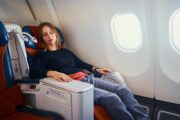Obstructive sleep apnea is a common sleep disorder where the upper airways get obstructed, leading to an intermittent stopping of breathing during sleep. Continuous Positive Airway Pressure Therapy (CPAP) is a common treatment for this condition. It involves the use of a CPAP mask which is connected to a small machine that pumps air into the user’s airway. One of the most important parts of the treatment is finding the right mask. In fact, being able to find a mask that is comfortable and has a good seal can make a great difference in how likely you are to succeed with CPAP therapy.
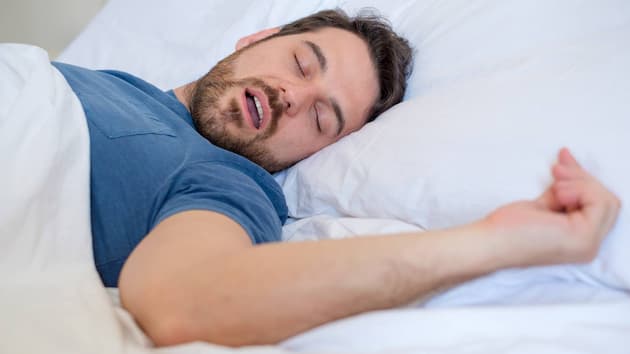
Source: Intermountain Healthcare
Your most common sleeping position will have a huge influence on your CPAP mask choice. For example, if you are a side sleeper, the bulk of a full face mask may make it difficult for you to sleep on your side as the mask might shift from your face. Side sleepers need a mask that will stay on even when it’s pressed against a pillow. Patients who sleep on their sides have found CPAP nasal masks and pillow masks to be the best choices for them.
Nasal CPAP Mask
A nasal maks has a rounded, triangular-shaped dome and is designed to fit over your nose comfortably. Available in different styles and sizes, this mask delivers pressurized air through the space of the mask, so it feels like you are breathing regular air. With CPAP nasal masks patients are supposed to inhale the air only through their nose. This makes these masks a good option for individuals who naturally breathe through their nose and need higher pressure. People who toss and turn or like sleeping on their side can also benefit from a nasal mask.
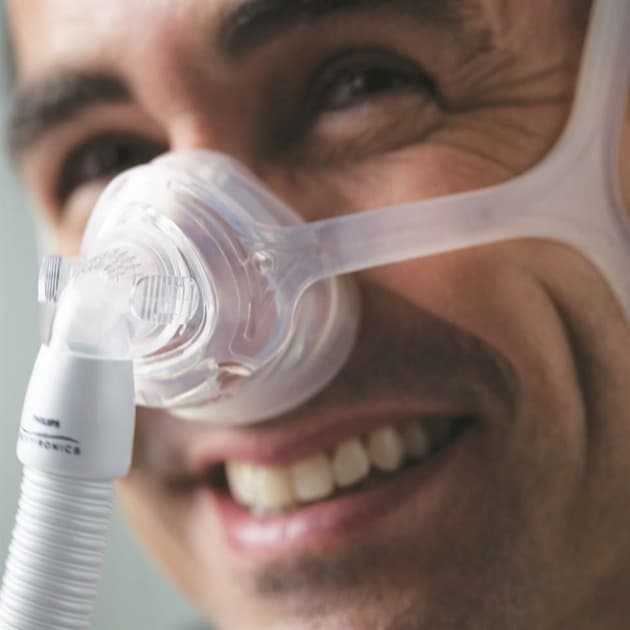
Source: Facebook
Nasal CPAP masks are designed for comfort and easy adjustment. Their cushion features a variety of thickness levels that allows a reliable seal for all nasal and facial structures. The frame is flexible and adapts to any movement you might make during the night. This makes is it easy for side sleepers to change their position without readjusting their mask. The mask also has a plush, soft fabric headgear that helps reduce marks and pressure when you sleep on your side. Doctors often recommend these masks for patients who prefer a more natural airflow, move around a lot in their sleep or require a higher pressure setting.
Nasal Pillow CPAP Masks
Also called nasal cushions, nasal pillows are smaller-sized masks. Resting right under the nostrils and featuring an unobtrusive headgear, they are much easier to sleep with. Instead of fitting the mask over your entire nose, you insert the nasal mask at the outer edge of your nostrils – it rests right above your upper lip. The two pillows or cushions seal to your nose, delivering pressure more directly than other CPAP masks.
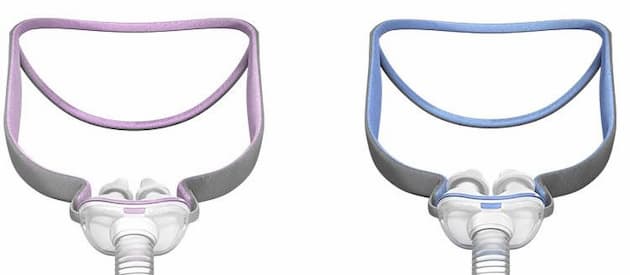
Source: Facebook
Nasal pillows have dual-wall flaps designed to provide comfort and ergonomic support while sleeping. The mask also comes with a built-in flexible chamber that ensures it stays in place even if you shift from side to side. A set of soft wraps and silicone-based headgear ensure the seal of the mask. Doctors recommend nasal pillow masks for patients who experience claustrophobia when they wear larger masks, toss and turn while sleeping, have a lot of facial hair or breathe through their nose.
If your doctor has prescribed you a high-pressure setting, you may find it challenging to handle all the forced air pressure. CPAP pillow masks can help minimize pressure. High pressure may cause other types of masks to lift, resulting in leaks and thus in a failure of compliance.
Can Mouth Breathers Use Nasal CPAP Mask?
Generally, for patients who breathe through their mouth while sleeping, doctors recommend full face masks as they offer several advantages to mouth breathers:
- Decreased nasal passage strain, especially during the cold season
- Useful for CPAP users with pressure above 17 cm h2
- A good choice for individuals who sleep on their side
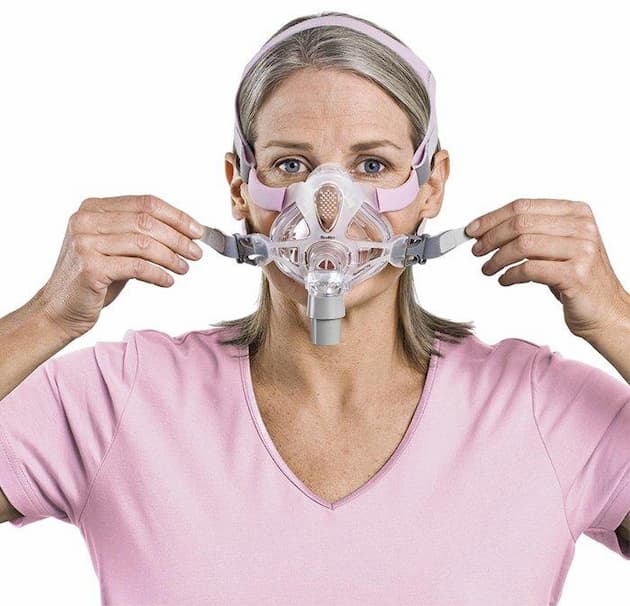
Source: Cardinal Sleep
For mouth breathers, a full face CPAP mask also causes less irritation to their nasal cavities because it sends the air into both the mouth and nose. Furthermore, CPAP users with a deviated septum or other nasal issues will benefit significantly from using a full face mask. If you predominantly breathe through your mouth when sleeping, using a nasal or nasal pillow mask may feel as if CPAP therapy isn’t working as expected. When most of the breathing is done by mouth and a nasal mask is worn, a reduced amount of therapeutic, pressurized air will enter the breathing passages. This will prevent you from optimizing your therapy and won’t let you reap all of its benefits.
Are There Any Problems Associated With Using Nasal Masks?
To avoid problems, it’s important that nasal masks are properly sized. If they are too small, air may leak out around them, reducing the effectiveness of the treatment. Conversely, if the mask is too large, it may uncomfortably stretch the nostrils. The plastic on the mask may irritate individuals with sensitive skin. Nevertheless, these complications are not very common and many people find nasal masks the best option for treating their sleep apnea.


